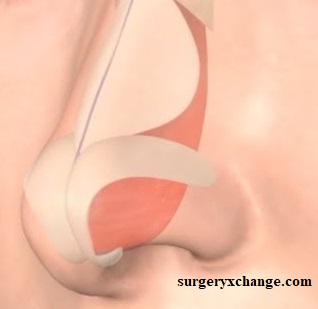
This is the procedure in which the displaced bone and cartilage that divides the two nostrils is repositioned. During the procedure, the nasal septum is straightened and relocated to the middle of your nose. This may involve the surgeon to cut and eliminate parts of the nasal septum before reinserting them in the correct position.
Why you need a septoplasty?
If you are having some deviation of the septum, it is common. When a deviated septum is serious, it can block one side of your nose and reduce airflow, causing difficulty in breathing through one or both sides of your nose. The added exposure of deviated septum to the drying effect of airflow through the nose may sometimes contribute to crusting or bleeding in certain individuals. It helps in straightening the nasal septum by trimming, relocation and substituting the cartilage, bone or both. If you have symptoms, like, difficulty in breathing through the nose that considerably affects your life, you may need a surgery to correct a deviated septum.
How to prepare?
Before arranging for septoplasty, you should meet with your surgeon to discuss the benefits and risks of the surgery. This meeting generally includes:
- Your medical history. Your doctor will ask questions about conditions you have or had, as well as any current medications.
- Physical checkup. The doctor will conduct a physical examination, which includes any relevant testing. The doctor will also observe your skin and the inside and outside of your nose.
- The Photographs of your nose may be taken from different angles. The doctor can use these photos for conversation before or after surgery.
- A discussion of your expectations. You and your doctor must exchange your thoughts about the outlooks.
Food and medications
It is suggested that you avoid medications which contain aspirin or ibuprofen for at least two weeks before surgery and after surgery. These medications may increase bleeding. Take only medications which are approved or prescribed by the surgeon.
Other precautions
If you smoke, it is suggested that you stop smoking. Smoking could disturb the healing process after surgery.
How it is executed?
It requires local or general anesthesia, according to your surgeon’s choice and on how complex surgery is.
- Local anesthesia: This type of anesthesia restricts your nose. The doctor will inject the anesthesia into the nasal tissues. The medication will make you dazed but not fully unconscious.
- General anesthesia: In this type of anesthesia, you inhale an anesthetic agent or receive an anesthetic through an IV line. It affects your whole body and induces a temporary state of unconsciousness.
Have a discussion with the doctor beforehand of which type of anesthesia will suit you.
During the surgery, the cut is closed usually with an absorbable stitch. Soft silicone straps will be inserted in each nostril to support the septum. To avoid bleeding after the operation, the doctor will place bandage-like material in your nose.
Recovery Process
Depending on the extent of the surgery, you may not be asked to comply with all of them:
- Avoid vigorous events, such as aerobics and jogging.
- Don’t blow your nose.
- Uplift your head while sleeping.
- Wear clothes that fasten in the front; don’t pull clothing, such as shirts or sweaters, over your head.
Risks involved
Possible risks specific to Septoplasty include:
- Excessive bleeding.
- The shape of the nose may change.
- An opening in the septum.
- A decrease in the sense of smell.
Who we are?
SurgeryXchange is an online platform to reduce the cost of hospitalization in India. The Social objective of right healthcare for all through access and affordability is addressed by SurgeryXchange. Get the right doctors, hospitals and be sure you need the surgery through our medical second opinion. SurgeryXchange also helps patients from Africa and other countries with easy access to medical care in India. For more details visit-
https://surgeryxchange.com/
